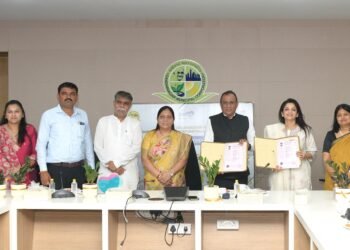NEW DELHI: Following a gap of 15 years, the Ministry of Environment and Forests is pleased to announce the notification of the Revised National Ambient Air Quality Standards 2009 in the official Gazette.
These ambient air quality standards/limits provide a legal framework for the control of air pollution and the protection of public health.
The previously existing National Ambient Air Quality Standards (NAAQS) were notified by the Central Pollution Control Board (CPCB) in year 1994 under the Air Act, 1981 for seven parameters i.e., Suspended Particulate Matter (SPM), Respirable Particulate Matter (RPM), Sulphur Dioxide (SO2), Oxides of Nitrogen (NOx), Carbon Monoxide (CO), Ammonia (NH3) and Lead (Pb).
The Central Government has thereafter also notified NAAQS for six parameters in the year 1996 under the Environment (Protection) Act, 1986.
The review of the previous NAAQS and inclusion of new parameters was undertaken by the CPCB in association with the Indian Institute of Technology, Kanpur.
Also Read: CSR has moved from the backroom to the boardroom
The proposal for revision in NAAQS was deliberated upon extensively and has been notified under the Environment (Protection) Act, 1986 on 16.11.2009 by the Ministry of Environment and Forests.
The CPCB has initiated the process of harmonising it’s notification under the Air Act, 1981 with the revised notification so as to ensure the efficient implementation of the new standards.
These revised Standards include initiatives that have been developed in consonance with global best practices and in keeping with the latest advancements in technology and research. Some of the salient features include:
Area classification based on land-use has been done away with so that industrial areas have to conform to the same standards as residential areas.
The standards shall be applicable uniformly with the exception of stringent standards for NO2 and SO2 in the Ecologically Sensitive Areas.
The previous standards for residential area have been uniformly applied for fine particulate matter (PM10), Carbon Monoxide and Ammonia. More stringent limits for Lead, SO2 and NO2 have been prescribed even for residential areas.
Also Read: CSR: GAIL spends Rs. 204 Cr for Social Welfare in FY 2021-22
Suspended particulate matter (SPM) as parameter has been replaced by fine particulate matter (PM2.5) which is more relevant for public health.
Other new parameters, such as, Ozone, Arsenic, Nickel, Benzene and Benzo (a) Pyrene (BaP) have been included for the first time under NAAQS based on CPCB/IIT research, World Health Organisation guidelines and EU limits and practices.
Though Mercury has not been notified as part of these revised standards, the Ministry is conscious of the need to monitor the same.
Research and development in standards setting and standardization of monitoring protocols for mercury is still in progress internationally.
As a result, it may be noted that even the most progressive regimes in this regard, those of the member countries of the European Union, have not included ‘mercury’ in their ambient air quality standards.
In furtherance of these Standards, the CPCB is in the process of creating a road-map for the generation and maintenance of a database, monitoring of required infrastructure and for the development of protocols.
Also Read: CSR: Maruti Suzuki spends Rs. 100 Cr in Social Development in 2021-22
The Ministry is also in the process of developing additional support systems of enforcement such as the National Environment Protection Authority (NEPA) and the National Green Tribunal (NGT) to ensure the effective enforcement of the Standards.



















